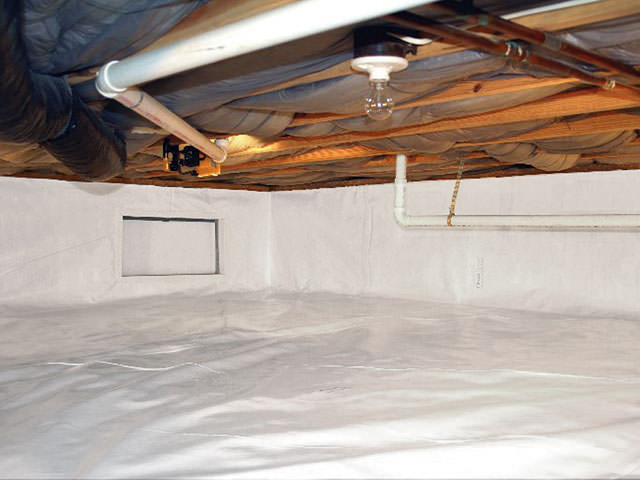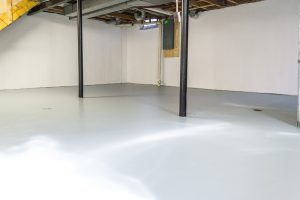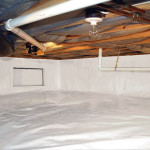Basement Waterproofing Demystified: Uncovering the Key Strategies for a Water-Protected Space
A wet basement is not only a common problem but also a significant concern for homeowners. The presence of moisture can give rise to various issues such as mold, musty odors, and structural damage to the house. To safeguard your property and ensure a dry and secure basement, it is crucial to implement effective basement waterproofing techniques. In this article, we will delve into the primary methods of basement waterproofing, empowering you with the knowledge to make an informed decision that best suits your needs.
When it comes to basement waterproofing, there is no one-size-fits-all solution. Every home is unique, and the choice of waterproofing technique should be based on factors such as the severity of the water problem, the type of foundation, soil conditions, and your budget. By understanding the different techniques available, you can assess their advantages and limitations and select the most suitable approach to keep water out of your basement.
A dry basement not only ensures the structural integrity of your home but also contributes to a healthy living environment. Excess moisture can promote the growth of mold and mildew, which can trigger allergies and respiratory issues, particularly for individuals with sensitivities. Additionally, a damp basement can create an unpleasant and musty odor that permeates throughout the house, impacting the overall indoor air quality.
By investing in basement waterproofing, you are taking a proactive step toward protecting your property’s value. Water damage can significantly diminish the worth of your home and make it less appealing to potential buyers. On the other hand, a dry basement demonstrates meticulous care and maintenance, enhancing the overall marketability of your property.
In the following sections, we will explore the primary techniques of basement waterproofing, namely interior waterproofing, exterior waterproofing, sealants, and French drain installation. Each method offers its unique benefits and addresses specific challenges associated with water penetration. By understanding the intricacies of each technique, you can make an informed decision tailored to your home’s specific needs.
Remember, basement waterproofing is not a luxury but a necessity for any homeowner seeking to protect their property from the damaging effects of water. Don’t wait until water problems arise; take proactive measures to safeguard your basement and ensure a dry, secure, and comfortable living space.
1. Effective Strategies for Interior Basement Waterproofing
When it comes to combating water intrusion in your basement, interior waterproofing is an effective technique that focuses on managing water that has already penetrated the foundation walls or floor. This method involves the installation of a drainage system and a sump pump, which work together to collect and remove excess water from your basement.
The first step in interior waterproofing is the installation of a drainage system. This system is designed to capture water that seeps through the walls or floor of your basement. It typically consists of a network of perforated pipes or a specialized channel that is installed along the perimeter of the basement walls or under the basement floor. The pipes or channels collect the water and direct it towards a sump pump pit.
The sump pump is a vital component of interior waterproofing. It is installed in the sump pump pit and serves as the main mechanism for removing the collected water from your basement. When the water level in the sump pit reaches a certain point, the pump is activated, pumping the water out of the basement and away from your home. The discharged water is typically directed away from the foundation through a discharge pipe or drainage system.
Interior waterproofing offers several advantages. Firstly, it effectively manages water that has already entered your basement, preventing it from accumulating and causing damage. By swiftly removing the water, interior waterproofing helps to maintain a dry environment and minimize the risk of mold growth, musty odors, and structural deterioration.
Additionally, interior waterproofing is a less invasive and more cost-effective solution compared to exterior waterproofing methods. Since the work is done inside the basement, there is no need for extensive excavation or disruption to the landscaping surrounding your home. This makes it a more practical option for existing homes where the total cost of exterior waterproofing may not be feasible or desirable.
Interior waterproofing is particularly beneficial for homes located in areas with a high water table or heavy rainfall. It provides an effective defense against hydrostatic pressure, which is the force exerted by water against the foundation walls. By installing a drainage system and sump pump, interior waterproofing helps to alleviate this pressure and prevent water from seeping into your basement.
It’s important to note that interior waterproofing is primarily focused on managing water that has already entered your basement. While it effectively controls water penetration, it does not address the underlying causes of water intrusion. If your basement is prone to frequent or severe water problems, it may be necessary to combine interior waterproofing with other techniques such as exterior waterproofing or the use of sealants for comprehensive protection.
2. Shielding Your Home: The Advantages of Exterior Waterproofing
Exterior waterproofing is a comprehensive technique that focuses on preventing water from entering your basement by addressing the root causes of water intrusion. This method involves excavating the soil around the foundation walls, inspecting and repairing any damage, and applying waterproofing materials to create a barrier against water penetration.
The first step in exterior waterproofing is excavating the soil around the foundation walls down to the footing. This process allows for a thorough inspection of the foundation walls, identifying any cracks, gaps, or areas of weakness that may contribute to water infiltration. Any necessary repairs are then made to ensure the integrity of the foundation.
Once the foundation walls are in optimal condition, a waterproofing material is applied. This typically involves the application of a waterproof membrane, which is a thick, rubberized coating that acts as a barrier against water. The membrane is applied to the exterior surface of the concrete floor and the foundation walls, providing a protective shield that prevents water from seeping into the basement.
In addition to the waterproof membrane, an exterior drainage system is installed to further enhance the effectiveness of exterior waterproofing. This system of drainage systems consists of perforated pipes or drains that are placed alongside the foundation walls. These pipes collect water that may accumulate around the foundation and direct it away from the house, preventing it from infiltrating the basement.
Exterior waterproofing offers several advantages. Firstly, it provides a proactive and preventive approach to keep water out of your basement. By addressing the source of water intrusion, exterior waterproofing helps to maintain a dry and secure environment waterproof your basement, minimizing the risk of mold growth, structural damage, and other water-related issues.
It’s important to note that professional installation of exterior waterproofing requires professional expertise and specialized equipment. Excavating the soil around the foundation walls can be a labor-intensive process, and the application of the waterproof membrane must be done correctly to ensure its effectiveness. Therefore, it is recommended to consult with experienced contractors who specialize in exterior waterproofing to ensure the job is done correctly and efficiently.
3. Sealants for Added Protection
Sealants play a crucial role in basement waterproofing by providing drywall with an additional layer of protection against water intrusion. These specialized substances are applied to either the interior or exterior walls of your basement, creating a barrier that helps to keep water out and maintain a dry environment.
Sealants are available in various forms, including liquid coatings, sprays, or sealant compounds. They are typically made from materials such as epoxy, polyurethane, or acrylic, each with its unique properties and benefits. The choice of sealant depends on factors such as the condition of the walls, the presence of cracks or gaps, and the type of foundation.
Applying sealants to the interior walls is a popular method to reinforce the waterproofing of your basement. Before application, it’s important to ensure that the walls are clean, dry, and free from any loose debris or contaminants. The sealant is then carefully applied using brushes, rollers, or sprayers to create a uniform and continuous waterproof coating throughout. This barrier helps to prevent water from seeping through the walls and entering the basement.
Sealants can also be applied to the exterior walls of the basement, complementing other waterproofing techniques such as exterior waterproofing. In this case, the sealant is applied after the foundation has been inspected, repaired, and waterproofed. The exterior sealant acts as an additional protective layer, preventing water from penetrating the basement walls, and further enhancing the effectiveness of the waterproofing system.
One of the significant advantages of using sealants is their versatility. They can be applied to various types of surfaces, including concrete, masonry, and even wood, making them suitable for different, waterproof basement walls and structures. Additionally, sealants can help to seal small cracks or gaps that may develop over time, minimizing the risk of water intrusion.
While sealants can be an effective measure to enhance basement waterproofing, it’s important to recognize their limitations. Sealants are best suited for addressing minor water issues and providing an added layer of protection. For more severe water problems or structural issues, it may be necessary to consider other techniques such as interior or exterior waterproofing.
4. Managing Waterflow: The Essentials of French Drain Installation
French drain installation is a popular and effective technique for managing water around the foundation of your home and preventing basement water problems. A French drain is a type of drainage system designed to redirect water away from the foundation and basement, helping to keep your basement dry and free from water damage.
The installation of a French drain involves digging a trench around the perimeter of your home’s foundation. The trench is typically sloped to ensure proper water flow. It is important to locate the optimal depth and position of the trench, taking into consideration factors such as the soil conditions, landscape, and water source.
Once the trench is excavated, a layer of gravel is placed at the bottom. This layer serves as a base for the drain and facilitates water movement. A perforated pipe is then laid on top of the gravel, with the perforations facing downward. This pipe acts as a conduit for water, collecting it and channeling it away from the foundation wall.
To complete the French drain installation, the trench is filled with additional gravel, covering the pipe completely. The gravel allows for proper drainage while preventing soil from entering the drain and causing clogs. Finally, the trench is covered with soil or sod to restore the original landscape.
The purpose of a French drain is to collect and divert water away from the foundation, preventing it from infiltrating the basement. It is particularly effective in areas with poor soil drainage or locations where the water table is high. By capturing water that would otherwise accumulate around the foundation, the French drain helps to alleviate hydrostatic pressure and reduce the risk of water seepage into the basement.
One of the advantages of a French drain is its versatility. It can be installed on both new construction projects and existing homes. For new constructions, the French drain can be incorporated during the initial site preparation, ensuring proper water management from the start. For existing homes, French drains can be retrofitted to address water issues and enhance the overall waterproofing system.
Make Basement Waterproofing a Priority
Basement waterproofing is an essential task for homeowners who prioritize the safety and security of their homes. By employing the primary techniques of basement waterproofing, you can effectively keep your basement dry and free from water damage. Consider the specific needs of your home and your budget when choosing the most suitable method. Remember, prevention is always better than cure, so don’t delay in waterproofing your basement.
In conclusion, by understanding the primary techniques of a basement waterproofing system, you can proactively address water-related issues and maintain a dry and secure basement. Whether you opt for interior waterproofing, exterior waterproofing, sealants, or a French drain, each method offers unique benefits for keeping water out of your basement. Prioritize the well-being of your home by investing in basement waterproofing, and enjoy the peace of mind that comes with a dry and protected living space.
Contact the Professionals at Everdry Waterproofing of Greater Grand Rapids Today! (800) 275-7910





